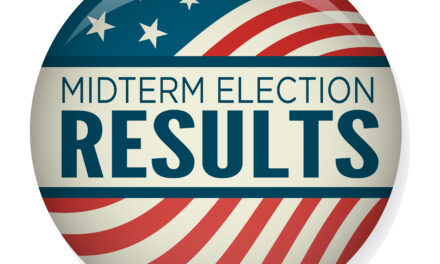The Varsity Blues scandal, the Trump budget, and research into reformers’ political leanings illuminate important realities about who and what influence children’s education.
As spring finally arrives in Washington, three very different education stories have been the talk of the town. The now-infamous Varsity Blues scandal, the release of President Donald Trump’s fiscal year 2020 education budget proposal, and some unusual research about school reformers each reveal something about the increasingly complex nature of the education in America. Each also makes it clear that politics and power now have just as much influence over education as policy and practice. While these stories did not teach me anything about education I did not already know, they did make that knowledge a little harder to bear.
Politics and power now have just as much influence over education as policy and practice.
The story of the year
It is not hyperbole to say that the Varsity Blues scandal, in which 50 people were charged with using bribes, false test scores, and other shady methods to influence college admission decisions, is one of the biggest education stories in years. Although the details of the scandal follow a familiar pattern — the powerful and wealthy using money and influence to get what they want — the high-profile cast of wrongdoers (actresses, coaches, CEOs) makes it far more salacious, if not nauseating.
The fact that wealthy families have the upper hand when it comes to college admissions is not news to anyone, especially poor people. But the audacity of this scandal is a distasteful reminder of just how unfair postsecondary education has become in the United States. For less affluent families or first-generation college-goers, the admissions process alone can seem like an overwhelming gauntlet of decision making and paperwork. Add to that the competition with wealthier parents who can provide their kids with test prep, counselors, and resume-enhancing life experiences, and the process can become soul crushing. And the worries don’t stop when the acceptance letter arrives — because then it is time to start worrying about tuition, living expenses, and how to make the most of the experience.
The parents involved in this scandal bought into a mythology that many elite colleges have worked hard to create. The idea that one school is so special, so rarified, that the mere act of attending can set its students up for a happy and successful life is not an education-based strategy; it’s a marketing plan. Yes, elite networks can open doors and lower some of the barriers to entry that exist in the professional world, but this scandal is based on the false idea that the institutions themselves make a student happy and successful. I would argue instead that the true value of a postsecondary education ultimately depends on the student. It has been my experience that a hard-working, scrappy student who seeks out opportunities and mentors and actively builds a network can go pretty far in this world. One of the saddest aspects of this sordid story is that the adults involved didn’t have more faith in the students. Did it ever occur to them that these kids could get into a great school that was the right place for them on their own merit? Clearly not. These parents had their eyes on a completely different prize. They saw their children’s postsecondary education as a vehicle for enhancing their own social standing. I guess the blessing that goes along with being a not-famous, not-powerful person is that most of us have more important things to worry about than our social standing.
The 2020 education budget
The release of Trump’s fiscal year 2020 education budget was small peanuts after the news of the scandal broke. By proposing to cut overall spending by $7.1 billion while maintaining level funding for the grant programs with the strongest advocacy base (Title I, special education, and English Language Acquisition), the administration has done the political equivalent of stepping on all the flowers in the garden except the perennial favorites. The Department of Education’s budget summary reads more like an Ayn Rand novel than a realistic plan for supporting public education. Strong on individualism, freedom, and choice, the administration once again appears to want to liberate students and parents from the tyranny that is public education. This time, however, officials seem clever enough to realize that any attempt to cut funding to those stalwart programs will be met with swift and fierce resistance, so they have focused on other targets.
For example, the $2.1-billion grant program that supports teacher training and development would be eliminated and replaced with a “test” program that would support the use of professional development vouchers. Putting aside the fact that the new program is only funded at $200 million (a $1.9-billion cut), do we really want to use teacher training as the proving ground for a test program that has no research base whatsoever? There is no doubt room for improvement when it comes to professional development, but when organizations like Learning Forward (whose sole focus is to support the ongoing development of teachers) express deep concerns about this plan, you have to wonder what (if any) logic is driving the administration’s stated goal of “elevating the teaching profession through innovation.”
The optics of rich people buying their way into elite universities can make for powerful messaging.
Higher education also took a hit in this budget. The administration once again seeks to eliminate the Public Service Loan Forgiveness program, which allows individuals who work in government or the nonprofit sector to be relieved of their student loan debt. The budget also cuts the Federal Work-Study program by a little more than half and takes away $2 billion in reserve funds for Pell Grants. These suggested cuts, which hit at the heart of federal student aid programs, come just as Congress begins the reauthorization process for the Higher Education Act. I have to believe the lingering stench of the Varsity Blues scandal will ultimately help the Democratic leaders in Congress who are pushing for a budget that actually helps students afford college. The optics of rich people buying their way into elite universities can make for powerful messaging.
Reformers’ political leanings
Finally, there is the not-so-typical research. Two prominent education researchers, Frederick Hess and Jay Greene, released a study this week that they hope will once and for all reveal the true political color of the education reform movement. In their view, certain education reformers — specifically, those who champion “charter schooling, teacher evaluation and accountability” — are inaccurately being portrayed as “right-wingers bent on undermining public education.” To determine which political group is in reality more dominant in the education space, they collected and analyzed data on the political contributions of a “large sample of individuals working in education reform organizations” and a group of “scholars who focus on education reform.”
The authors concluded that the education reform movement is actually not controlled by bunch of public-school hating right-wingers decked out in conservative red. It is instead dominated by a bunch of highly partisan Democrats cloaked in a “deep blue hue” that “rivals the leftward lean of Democratic precincts such as Hollywood and public-employee unions.” The authors have done a very creative and thoughtful analysis of a political landscape that is often shrouded in smoke and mirrors. Although I strongly suspect that the majority of the country couldn’t care less about the political machinations of reformers, this unusual study does raise some interesting questions, including whether it is the political imbalance of the education reform movement that has doomed so many of its efforts.
So could the politics of the education reform movement become more balanced over time? I think it will depend, at least in part, on the next administration. Using the power of the bully pulpit, Secretary of Education Betsy DeVos had an opportunity to bring together some of the factions that fought so fiercely during the Obama years, but from the beginning it was clear she was more ideologue than diplomat. The next secretary of education will again have the opportunity to lead and support a truly bipartisan effort to strengthen public education. It will be interesting to see if he or she uses the bully pulpit to create a larger, more politically balanced tent for conversations about how best to support schools, teachers, and communities.
References
Greene, J.P. & Hess, F. (2019, March). Education reform’s deep blue hue. Education Next.
U.S. Department of Education. (2019). Fiscal year 2020 budget summary. Washington, DC: Author. www2.ed.gov/about/overview/budget/budget20/summary/20summary.pdf
ABOUT THE AUTHOR

Maria Ferguson
Maria Ferguson is an education policy researcher, thought leader, and consultant based in Washington, DC.










